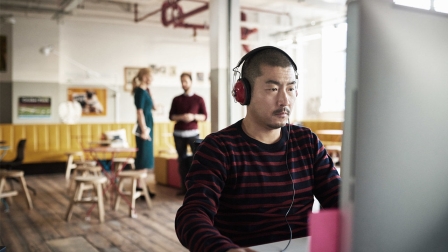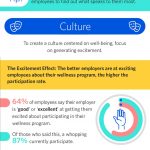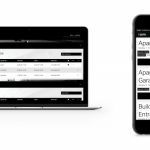The Scientific Reason Why Coworking May Be The Future Of Work
Employees from the likes of General Electric, Walmart, and Toyota— 4,000 companies a year, in fact—wend their way to a 60-person company based underneath a parking garage in Ann Arbor, Michigan.
The visitors are coming to see firsthand how Menlo Innovations, a software development company, is reinventing the way we work.
Menlo, according to CEO Richard Sheridan, has sought to disrupt a crisis-ridden software development industry and set a standard in quality by optimizing its own work environment. At Menlo, programmers work in pairs that rotate every five days, and the company’s social structure is designed to help employees collaborate. Recently the company expanded its office to allow startups and entrepreneurs to work out of the space right alongside Menlo programmers, generating connections and innovation in the process.
More than just another trendy curiosity of the tech industry, this approach seems to have a strong basis in the psychology of performance. Menlo Innovations is hardly alone in its experiment, of course. By now, coworking is a robust movement, with WeWork growing fast and its ambitions high, and other coworking outfits taking a wide, often surprising variety of forms.
Lately, even traditional companies—including those that tour Menlo for inspiration as well as many that don’t—have emulated certain elements of coworking in order to encourage their own employees to interact more. According to spokesperson Laura Paredes, General Electric plans to make large parts of its new Boston headquarters, slated to open in 2018, accessible to the public for innovation, learning, and collaboration.
And according to researchers who’ve studied the effectiveness of coworking, they’re all on to something. Here’s why.
Two Basic Human Needs Coworking Fulfills
A team of researchers at the University of Michigan’s Steven M. Ross School of Business led by business professor Dr. Gretchen Spreitzer, who also directs the Center for Positive Organizations, has spent the last four years studying coworking. In the process, they’ve interviewed the founders of coworking companies around the U.S. and surveyed more than 200 workers from dozens of coworking spaces; one team member spent six months as a coworking member.
Their research uncovered two key benefits to the coworking experience, both of which have been linked to improved employee performance. Simplified somewhat, it comes down to flexibility and autonomy without dispensing with meaningful community.
It turns out that coworking spaces’ hallmarks—like funky design features—are far less important than their social structures, where workers feel a sense of individual autonomy that’s still linked to a sense of collaboration, the Michigan team told me in interviews. Most coworking spaces, for all their variation, tend to strike that careful balance between those crucial needs—in ways that neither solo freelancing nor the traditional office experience usually provide.
Typically, coworkers pay a monthly fee in exchange for the freedom to work when, where, and how they want. Often open 24/7, coworking facilities let members come and go and sit wherever they like. There’s no forced socialization. You can be as friendly or as reserved as you want.
Coworkers also have the freedom to literally shape their environment—which some research suggests can significantly improve workers’ performance and productivity. In their research, the Michigan team found that some coworking companies have taken it upon themselves to redesign their spaces to better meet members’ needs, raising additional money to do so and inviting users to help design the new features.
Independence, adaptability, flexibility: These characteristics are fundamental human needs. So it isn’t surprising that they’ve been linked to positive outcomes in the workplace, too, from improved performance to higher rates of employee commitment and engagement.
They also help explain why more companies are embracing flexible work schedules—many of the same ones, in fact, that are exploring coworking. GE, Parades tells me, now offers flexible work arrangements for all its U.S. employees as long as they’ve got their managers’ approval.
Communities That Minimize Internal Competition
But this isn’t the whole story, the Michigan researchers found. Autonomy and flexibility may be crucial, but your work environment is hardly the only factor that can supply them. The other key benefit that coworking spaces tend to offer is a sense of community—not just any community, but one where people, as Dr. Spreitzer puts it, are “free to be themselves” because they don’t feel they’re competing with those around them. As a result, ideas are more freely shared.
Spreitzer, Garrett, and their third colleague Dr. Peter Bacevice, director of research at architecture and design firm HLW International, found that that type of communal spirit provides the necessary ballast to autonomy. While too much freedom can actually hurt productivity, grafting a community structure onto an already flexible one provides what she calls “the optimal degree of control.”
Typically, people join coworking spaces because they want to be part of a community while still doing their own thing. Members often share their thoughts and needs on Slack or some other communal platform. Everyone is usually expected to volunteer to maintain the facility. Lectures, outings, and other events are planned—but optional.
Here’s one coworking member that PhD candidate Lyndon Garrett interviewed as part of the research:
It’s really positively affected my work because it . . . makes me happier all the time, and having people around that I’m not in competition with but who can bring experience from different industries and different situations is really, really helpful . . . I’ve been able to come in contact with ideas I wouldn’t have normally come in contact with.
Traditional companies are trying to create that same sense of serendipity. AT&T has created coworking-like spaces where the company’s own engineers mingle with independent developers and startups in order to accelerate AT&T’s innovation cycle. The office furniture company Steelecase redesigned its corporate office to include a work café that strongly resembles those at the center of many coworking spaces, based on the idea that employees may be stimulated and build friendships with people outside their work unit.
So if more employers follow suit in the months and years ahead, they aren’t just jumping on a trendy bandwagon. Sure, they might be doing that, too, but they’re also trying to tap into the science that helps explain what makes people work well—alone and together.
Update: this story has been updated to include a mention of Dr. Peter Bacevice, the third member of the Michigan research team whose name did not originally appear.
Fast Company , Read Full Story
(36)













